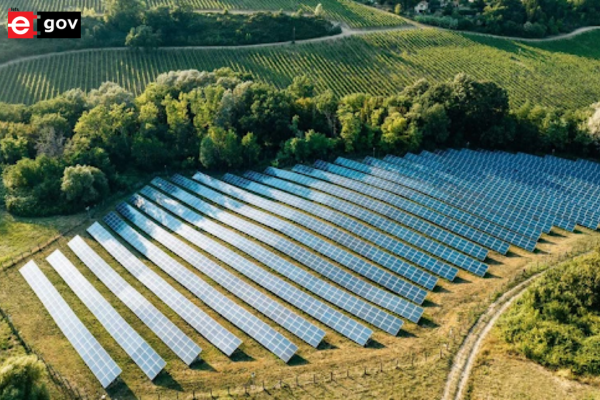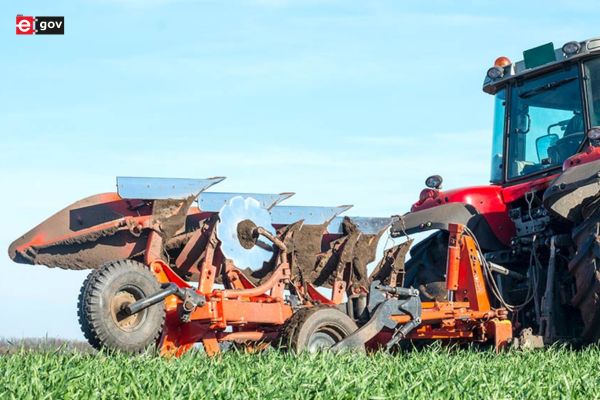
Infrastructure is the backbone of economic prosperity and overall national development. As India strives to transition from a developing nation to a developed one by 2047, infrastructure projects are at the forefront of this transformation. These projects not only lay the foundation for growth but also significantly drive demand for construction equipment. According to studies by the National Institute of Public Finance and Policy and the Reserve Bank of India, every rupee spent on infrastructure yields a GDP gain of 2.5 to 3.5 rupees. This multiplier effect highlights the critical role of infrastructure development in driving economic growth and the demand for construction equipment.
The Government of India has made substantial efforts to boost infrastructure development through reformed policies and increased budget allocations. Since the pandemic, the infrastructure budget was augmented by around 75%, with 3.3% of GDP dedicated to this sector. This increase emphasises the government’s focus on developing the transport and logistics sectors, with roads and highways receiving the largest share of the budget, followed by railways and urban public transportation infrastructure, all of which are directly or indirectly bolstering the demand for construction equipment.

Logistical Development Driving Demand for Construction Equipment
Major initiatives like the PM Gatishakti National Master Plan, UDAN and the various Metro Network expansion initiatives highlight the government’s comprehensive approach to infrastructure development. These projects are creating a conducive ecosystem for economic activities, attracting investments, generating job opportunities, and improving the quality of life for millions of Indians. The government’s ambitious targets include developing a 2 lakh-km national highway network by 2025, expanding the number of airports to 220, creating 35 Multi-Modal Logistics Parks, and operationalizing 23 waterways by 2030. These initiatives are complemented by high-profile projects such as the Bengaluru-Chennai Expressway, Western Dedicated Freight Corridor, Noida International Airport, Navi Mumbai International Airport, and the Mumbai Trans Harbour Link.

Government Initiatives
Government-backed projects play a crucial role in boosting the demand for construction equipment. Initiatives such as “Make in India” and dedicated infrastructure development funds encourage investment and create a fertile ground for growth. Significant budget allocations for infrastructure, particularly in the transport and logistics sectors, underscore the government’s commitment to development. Mega projects like Bharatmala, Sagarmala, the Delhi-Mumbai Industrial Corridor, and the Bullet Train Project are prime examples of government-led initiatives that drive substantial demand for construction machinery. These high-profile projects require a massive amount of construction equipment, ranging from basic machinery to advanced, technology-driven tools.

Urbanisation and Smart Cities
Urbanisation is another key driver of demand for construction equipment. As more people move to urban areas, there is a growing need for new residential and commercial infrastructure. This urban expansion necessitates the use of a wide range of construction machinery to build high-rise buildings, roads, bridges, and other essential infrastructure. The Smart Cities Mission, which aims to develop 100 smart cities across India, further amplifies this demand. These smart cities require advanced construction machinery to create efficient, modern urban spaces equipped with the latest technologies. The development of smart cities involves constructing sustainable buildings, smart roads, and integrated infrastructure systems, all of which require sophisticated construction equipment.

Technological Adoption
The adoption of new technologies in construction equipment is revolutionising the industry. Technologies such as artificial intelligence (AI), the Internet of Things (IoT), and automation are enhancing efficiency and safety in construction operations. These technological advancements make construction equipment more desirable as they not only improve productivity but also reduce operational risks. For instance, automated machinery can perform complex tasks with greater precision and consistency, reducing the likelihood of human error and enhancing overall project efficiency. As the construction industry continues to embrace these technologies, the demand for advanced, tech-enabled construction equipment is set to rise.
Public-Private Partnership (PPP)
Public-Private Partnerships (PPPs) have proven to be effective in accelerating infrastructure development in India. By leveraging private investment for public infrastructure projects, PPPs help bridge the funding gap and expedite project completion. This collaborative approach results in a higher requirement for construction equipment, as private firms bring in modern machinery and innovative construction techniques. PPPs are particularly prevalent in large-scale projects such as highways, ports, and urban development, where substantial investment and advanced production capabilities and modern construction machinery are needed.
Sectoral Growth
The growth of various sectors such as transportation, energy, and urban infrastructure directly influences the demand for construction equipment. In the transportation sector, the expansion of road and railway networks requires a significant amount of construction machinery. The energy sector, particularly renewable energy projects like solar and wind power, also drives demand for specialised construction machinery. These projects require equipment capable of handling large-scale installations and complex engineering tasks. Similarly, the urban infrastructure sector, encompassing housing, sanitation, and public transportation, continually needs construction equipment to support ongoing development and modernization efforts. The need for affordable housing under initiatives like the Pradhan Mantri Awas Yojana, along with urban cleanliness and sanitation improvements through the Swachh Bharat Abhiyan, requires extensive use of construction machinery.
Economic Factors
Economic growth and industrial expansion create a conducive environment for infrastructure projects, thereby increasing the need for construction machinery. A thriving economy boosts investment in infrastructure, as both public and private sectors seek to capitalise on growth opportunities. India’s vision of becoming a developed nation by 2047, with an economy growing from USD 3 trillion to USD 40 trillion, underscores the importance of sustained infrastructure investment. As industries expand, there is a greater need for robust infrastructure to support their operations, leading to a surge in demand for construction equipment.
Also Read | Building a New India: The Role of Infrastructure in Economic Development
Future Impact and Growth Story
India’s journey towards becoming a global economic powerhouse is intrinsically linked to its infrastructure development. The demand for construction equipment is being driven by a combination of factors, which collectively create a robust market for construction machinery, essential for building the infrastructure that underpins national growth. As India continues to invest in its infrastructure, it is not only enhancing economic opportunities but also improving the quality of life for its citizens. The ongoing infrastructure transformation is paving the way for India’s sustained economic prosperity, with construction equipment playing a critical role in this journey.
Views expressed by: Manish Mathur, CEO, ACE – Action Construction Equipment Ltd
Be a part of Elets Collaborative Initiatives. Join Us for Upcoming Events and explore business opportunities. Like us on Facebook , connect with us on LinkedIn and follow us on Twitter, Instagram.
"Exciting news! Elets technomedia is now on WhatsApp Channels Subscribe today by clicking the link and stay updated with the latest insights!" Click here!













